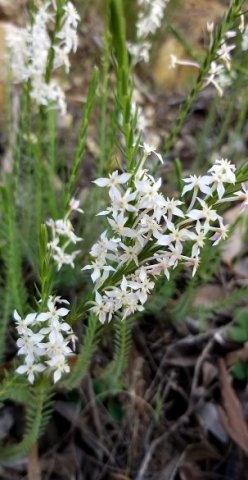Struthiola

Author: Ivan Lätti
Photographer: Uri Mitrani
Struthiola is a genus of shrubs and shrublets in the Thymelaeaceae or Daphne family. They are commonly known as featherheads and in Afrikaans as veertjies (little feathers), referring to the plumose flower spikes.
The simple, needle-like or ericoid, sometimes rounded leaves are opposite in four ranks in more species than those where they are alternate. The leaves are without petioles and have entire margins.
The often white or cream, sometimes pink or red flowers are without pedicels, growing solitary, occasionally in pairs, from upper leaf axils. The stem-tip inflorescences are spikes, sometimes long ones. The long, thin, floral tube is cylindrical to inflated in its upper part with a surrounding seam around the top of the ovary where the fruit will later dehisce. There are four equal, petal-like sepals and four, eight or twelve shorter and smaller, fleshy petals or petal scales above them, surrounded by stiff hairs.
There are four stamens opposite the petals, arising from deep inside the throat of the tube and included in it. The superior ovary consists of only one locule and bears one ovule. The style arising from the side of the ovary is also included, the stigma usually a hair tuft.
The flowers are mostly fragrant at night, adapted for moth pollination. There is an Afrikaans common name for some of the species: juffertjie-roer-by-die-nag (little-madam-moves-by-night).
The fruit is an achene, one simple, dry fruit contained in the persistent tube base.
There are Struthiola 42 species, all in South Africa, mostly coastal and 25 in the fynbos.
The plant in picture is Struthiola myrsinites (Leistner, (Ed.), 2000; Manning, 2007).

